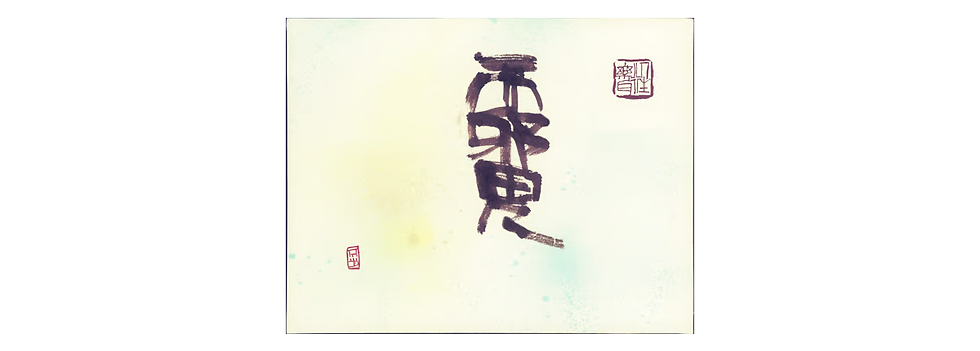What Is Japanese Calligraphy? – Experiencing Japanese Culture Through the Art of Shodo
- 清水 芳樹
- 5月24日
- 読了時間: 2分
更新日:7月20日

What Is Japanese Calligraphy?
Japanese Calligraphy, also known as Shodo, is far more than just the act of writing characters. It is a deeply expressive art form that blends beauty, structure, and meaning into every brushstroke. Through the brush, artists communicate their emotions, thoughts, and even their state of mind—turning writing into a living expression of the soul.
A Brief History: From Chinese Origins to Japanese Aesthetics
The roots of Japanese calligraphy trace back to the 5th century when Chinese writing systems and calligraphic techniques were introduced to Japan. Over time, these forms were adapted and evolved to reflect Japan’s own cultural identity. Shodo developed into a uniquely Japanese practice, balancing the philosophical and artistic with refined aesthetics.
Major Styles of Japanese Calligraphy
Japanese calligraphy consists of several main styles, each offering a different approach to expression:
Kaisho (Block Style): Clear, structured, and easy to read—ideal for beginners and formal writing.
Gyosho (Semi-Cursive Style): More fluid and dynamic, striking a balance between readability and artistic flair.
Sosho (Cursive Style): Abstract and emotional, with brushstrokes that flow freely like ink in water.
Calligraphers select styles based on the message they wish to convey and their personal artistic journey.
Essential Tools of the Art
The practice of Japanese Calligraphy requires mastery of the “Four Treasures”:
Fude (Brush)
Sumi (Ink)
Washi (Japanese Paper)
Suzuri (Inkstone)
These tools are not just instruments—they are extensions of the artist. Mastering them is considered essential for developing one’s calligraphy.
Japanese Calligraphy in the Modern World
Today, Japanese Calligraphy continues to inspire artists and creatives both in Japan and around the world. It is increasingly seen in contemporary art, graphic design, fashion, and even mindfulness practices. Global workshops and classes have introduced this traditional art form to new generations and cultures, keeping it alive and evolving.
Conclusion: A Mirror of the Mind
Japanese Calligraphy is more than an art form—it is a mirror that reflects the artist’s inner world. It teaches patience, focus, and the beauty of imperfection. Whether you are an art lover, a seeker of cultural knowledge, or simply curious about Shodo, learning about Japanese Calligraphy offers a unique and meaningful way to connect with the spirit of Japan.



Comments